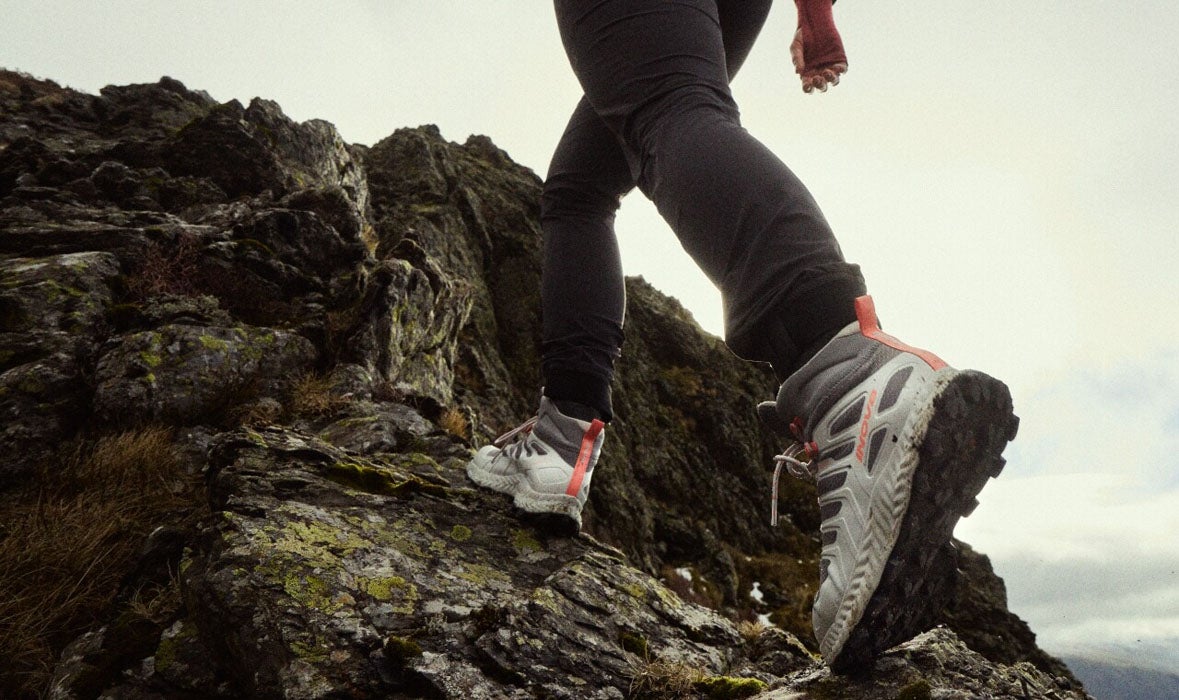
When looking for a buddy to share your adventures with, you need to choose wisely. Make sure they are a good match! They need to be up for the challenge, be reliable and fun, and not rub you up the wrong way. The same applies for your hiking boots!
Picking the right pair of hiking boots is a crucial decision. Get it right and your feet will feel comfy, dry, cushioned and protected, no matter how rough or mountainous the terrain gets. Get it wrong and you’ll be suffering from blisters, painful pinch-points and your whole hiking experience will be ruined. So it’s vital to think carefully about your purchase and make an informed choice – it can make a huge difference to your enjoyment of the great outdoors.
In this article, we outline the things you need to think about when purchasing a new pair of hiking boots or shoes. We’ll explain the different features to look out for in a boot’s design, analyse the purpose of INOV8’s hiking boot models, and suggest how you can pick the right one for your feet. It’s our ultimate guide to buying hiking boots.
HIKING BOOTS OR SHOES?
Both boots and shoes are designed to offer comfort and protection while you are hiking. A good pair should be hardwearing, offer good grip and underfoot protection.
Hiking boots obviously benefit from additional height – this offers more protection from vegetation and the weather. They also add some extra stability if you are carrying a heavy pack.
Hiking shoes on the other hand, are more lightweight which makes them very comfortable and also helps you to save energy. Shoes are also more versatile. You can wear them for a variety of activities in the outdoors.
In the end the choice is personal. It depends on what feels more comfortable and works for the conditions and the terrain you are covering.
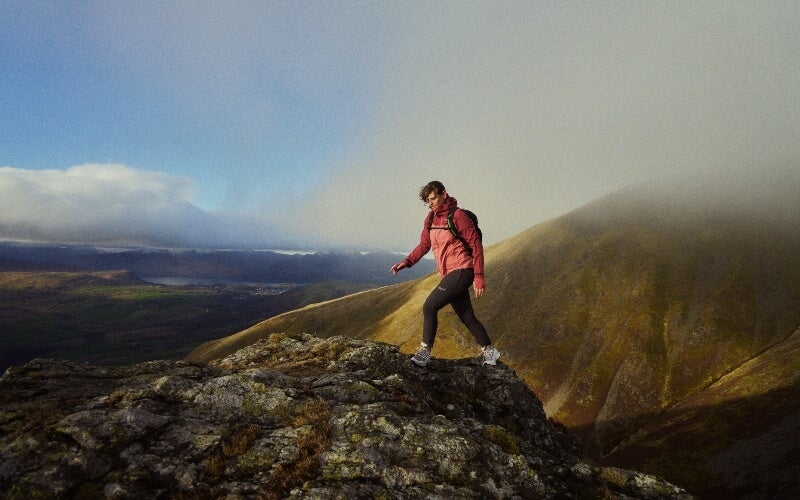

PROTECTIVE FEATURES
Specialist hiking footwear will have built-in features to help protect you. Let’s start from the bottom up:
OUTSOLE GRIP
You’ll feel more confident and relaxed if you can trust your footwear. Whether you have grip or you slip depends on the terrain as well as your footwear.
If the terrain is soft, such as grass and mud, you want nice deep lugs that can claw into this terrain and keep you from slipping.
If the terrain is very hard, you need to rely on friction, which is the stickiness of your outsole on the surface. The more contact area, the better the grip. Shorter lugs and softer rubber gives better friction.
Water dispersal channels on the lugs help to guide water away from the contact area to ensure better grip on wet surfaces.
ROCK PLATE
In order to protect the sole of your feet from sharp objects, such as jagged rocks, hiking boots and shoes are often equipped with a rock plate or shank. This rock plate sits between the outsole and the cushioned midsole.
One downside to rock plates, particularly carbon ones, is that it adds stiffness to the boot. While this might feel safe and protective, it also stops you feeling the terrain, which means your body can't react to it as well.
Our METAPLATE, rock plate technology is designed to provide protection, but not to stiffen the sole like a carbon plate would, because we believe our feet need to be able to move naturally. A flexible sole enables your foot to adapt to uneven terrain. Because the foot has more bones and joints, allowing for such adaptations, it is better suited to this task than either the ankle or the knee.
Flexibility also helps with grip and stability. The flex means more of the outsole is in contact with the ground on uneven terrain. More contact area means more grip!
MIDSOLE CUSHIONING
Cushioning refers to the midsole of the shoe, and is designed to give you softness and bounce as you walk.
To decide what is the right amount of cushioning for you, you need to consider:
- The amount of weight you’ll be carrying
- The surfaces you’ll be walking on
- How far you’re going
You want just enough cushioning to keep you safe and comfortable, but no more – the more cushioning a boot has, the more unstable, heavier, and less agile it is.
On soft terrain – grass, mud – you’ll need less cushioning since the terrain provides it for you. While over hard and rocky ground and for longer hikes you probably want a bit more cushioning to provide comfort and protection.
UPPER
The upper is the exterior material of a hiking boot. What the upper is made from and how it’s constructed will affect how comfy, soft and supple the boot feels on your foot.
Stronger boots may have additional protective features on the outer:
- A toe bumper - a strong panel of material across the toe box to protect your toes from rocks
- A rubber rand - a rubber layer that wraps around the toe, sole or whole boot to offer additional protection and durability
- A stiffened heel cup - this helps to lock the foot in place and gives additional stability and support, which can be helpful if you’re carrying a heavy pack
WATERPROOFING
A waterproof-breathable membrane liner will help keep your feet dry. This is often GORE-TEX. The pro of GORE-TEX is, obviously, that it will stop water getting to your socks and feet. The downside is that in warmer conditions your feet can get hot and sweaty inside a GORE-TEX liner.
If you’re a year-round hiker, and your budget can stretch to it, it may be an idea to have a waterproof and non-waterproof pair of boots so you can switch to the conditions.
ANKLE CUFF
A higher cuff will help fend off water, mud and debris from entering the boot and provide protection from vegetation. Lower cuffs (often referred as ‘mid’ height) will make a boot lighter with a more flexible feel.
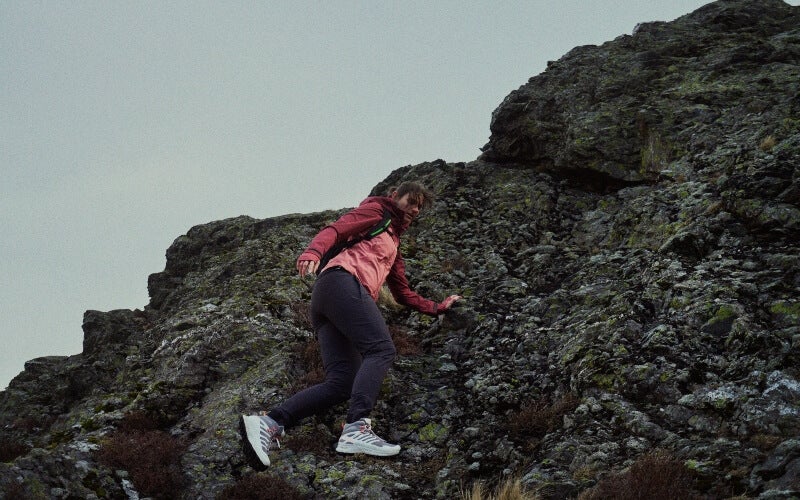
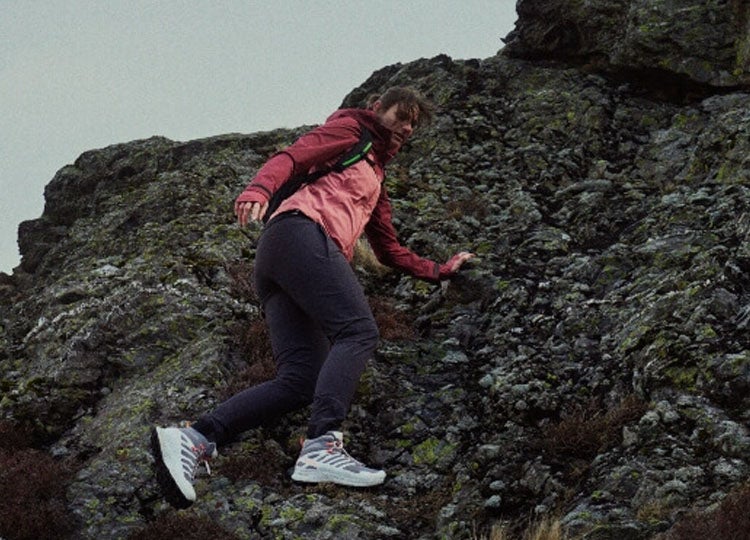
HOW IMPORTANT IS THE WEIGHT OF A HIKING BOOT?
A lightweight boot doesn’t just feel comfortable, it’ll also be saving more energy than you might think. There is a saying that "a pound on your feet equals five pounds on your back." So removing a pound of weight your boots feels like removing five pounds from your backpack!
As far as anyone can tell, the "one pound on your feet equals five pounds on your back" notion originated with Sir Edmund Hillary. Since then, numerous studies by academic researchers have concluded: weight on the feet is disproportionately more exhausting than weight carried on the torso. The consensus is that carrying an amount of weight on your feet requires between 4.7 and 6.4 times as much energy as carrying that same weight on your back.
At the same time you want your hiking boots to protect your feet. Generally, protection adds weight, whether that is added cushioning, a reinforced toe bumper, a rock plate or a waterproof membrane. It’s a difficult to trade, but advancements in technology now allow surprising levels of protection in even the most lightweight hiking boots.
FIT
Fit is the biggest consideration when it comes to footwear. There’s no one size fits all. Everyone’s feet are different (are yours wide, narrow, straight, curved, arched, flat or weirdly-shaped in any way?). The best bet is to always try before you buy. Visit a specialist shop and get fitted by a skilled boot fitter.
Aim for a secure, comfy fit, but without excessive compression or pinching. Space in the toe box for your toes to splay and the right volume at the forefoot are important.
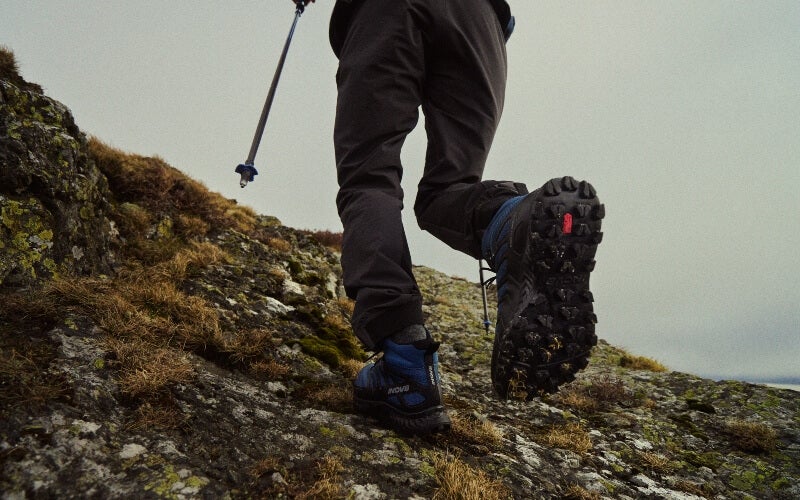
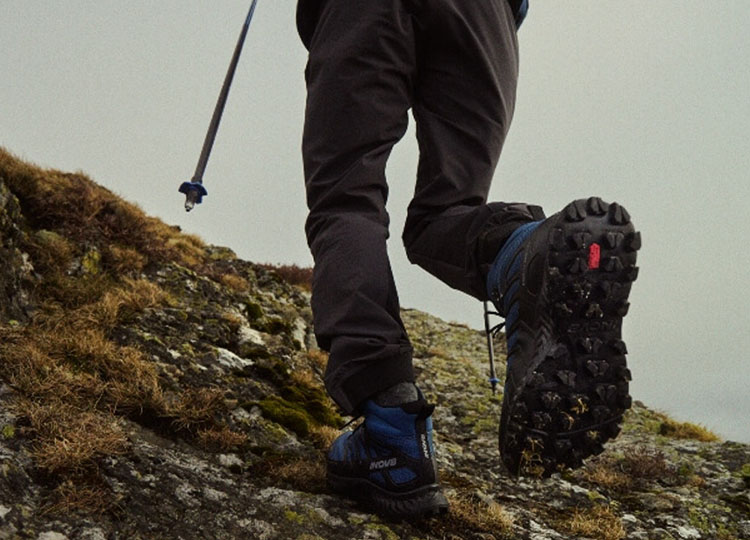
WHAT TYPE OF HIKER ARE YOU?
What type of hiker are you? Do you like to hike fast in a nimble, agile and athletic fashion? Or are you a slow plodder, deliberate in every step?
Where will you be hiking, at what time of year and in what weather conditions? Will you just be ambling along a riverside trail or beasting it up a gnarly Munro ridge? Are you a fair-weather -only hiker or do you head for the hills in atrocious rain? And do you tend to hike just once a week on a Sunday, or are you planning a 14-day non-stop assault of the Cape Wrath Trail?
Depending on your answers to the questions above, the type of boot you’ll need can vary significantly, so think carefully about what type of hiker you are. Here are two common hiker personality types and their boot needs. Which one are you?
"THE WEEKEND WARRIOR"
You love to spend your weekends heading to the hills in the Lake District, Peak District or Snowdonia, bagging peaks on your epic day hike adventures. You want your feet to be dry and to have a good level of ankle protection, without compromising comfort.
Boot needs – a good balance between weight, comfort, durability, waterproofing and protection
"THE ULTRALIGHT’N’FAST THRU-HIKER"
You love to move fast and smash out the miles, ticking off yet another long-distance trail such as the West Highland Way or Pennine Way. Day-after-day comfort and no blisters are your priority. You’re not bothered about wet feet, as you’re moving so fast to slow down through bogs, and you’re more focused on big mileage goals than taking on technical ridges.
Boot needs – the lighter the better, comfort must be faultless, and you want a bouncy energetic feel
INOV8’S FOUR HIKING BOOT MODELS
INOV8 has four different hiking boots models. Each pair is designed for a specific type of hiker and type of hiking, and each pair has varying pros and cons. Here’s an overview:
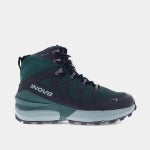

ROCLITE PRO MID GTX – THE TOUGHEST ONE
Technical, protective hiking boots. The ROCLITE PRO MID GTX boots are ideal for demanding day hikes, multi-day backpacking trips & thru-hikes.
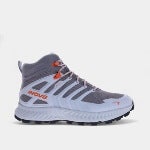

ROCLITE MID GTX – THE DAY HIKING SPECIALIST
Lighter and more agile than the PRO 400, but still waterproof and surprisingly tough, this boot is lightweight, cushioned and grippy on any surface – perfect for day hikes on challenging terrain.


ROCFLY G 390 – THE MEGA CUSHIONED ONE
Mega-cushioned and bouncy with excellent energy return, this non-waterproof boot has a wide toebox for top-notch levels of comfort, making it ideal for multi-day hikes. Each boot weighs 390g (men’s UK 8).


ROCFLY G 390 GTX – THE WATERPROOF ONE FOR LONG-DISTANCE TRAILS
Mega-cushioned and bouncy with excellent energy return, this non-waterproof boot has a wide toebox for top-notch levels of comfort, making it ideal for multi-day hikes. Each boot weighs 390g (men’s UK 8).
CAN YOU HIKE IN TRAIL RUNNING SHOES?
Trail shoes can offer a lightweight alternative for hiking – especially if you don’t need a GORE-TEX waterproof membrane.
Grip will come as standard with a decent pair of trail running shoes, and protective features such as a rock plate may also be included. It all depends on your preference – if it’s a day hike in dry conditions, they may be a good choice. If it’s a multi-day trek carrying a heavy pack, you may be thankful of the extra support a pair of hiking boots can provide.
